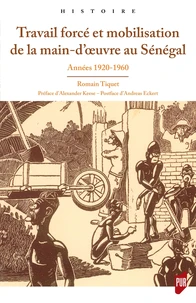Ethnicity and the long - term perspective. The African experience
Par :Formats :
- Paiement en ligne :
- Livraison à domicile ou en point Mondial Relay indisponible
- Retrait Click and Collect en magasin gratuit
- Nombre de pages215
- PrésentationBroché
- FormatGrand Format
- Poids0.31 kg
- Dimensions15,0 cm × 22,5 cm × 1,0 cm
- ISBN978-3-0343-0337-8
- EAN9783034303378
- Date de parution01/03/2010
- CollectionCEAUP Studies on Africa
- ÉditeurPeter Lang
Résumé
The debate about ethnicity in sub-Saharan Africa has come to an uneasy consensus in the 1990s, but it has to be asked if we are really close to a solution. How can comparative and historical views help to inform the debate ? In this work, seven scholars bring in a long-term perspective to ethno-cultural solidarities, which they explore within a multi-disciplinary framework. This return to the ‘heart of the ethnic group', twenty-five years after Elikia M'Bokolo's and Jean-Loup Amselle's path-breaking reinterpretation of ethnicity in Africa, argues for a reappraisal of approaches to ethnicity that have been adopted in recent decades.
Focusing on two major geographical regions of the African continent – Senegambia including Guinea-Bissau and Sierra Leone, and the area of Southern Tanzania and the northern half of Mozambique –, the chapters in this volume provide a new historical interpretation of the processes of identity-building in sub-Saharan Africa.
Focusing on two major geographical regions of the African continent – Senegambia including Guinea-Bissau and Sierra Leone, and the area of Southern Tanzania and the northern half of Mozambique –, the chapters in this volume provide a new historical interpretation of the processes of identity-building in sub-Saharan Africa.
The debate about ethnicity in sub-Saharan Africa has come to an uneasy consensus in the 1990s, but it has to be asked if we are really close to a solution. How can comparative and historical views help to inform the debate ? In this work, seven scholars bring in a long-term perspective to ethno-cultural solidarities, which they explore within a multi-disciplinary framework. This return to the ‘heart of the ethnic group', twenty-five years after Elikia M'Bokolo's and Jean-Loup Amselle's path-breaking reinterpretation of ethnicity in Africa, argues for a reappraisal of approaches to ethnicity that have been adopted in recent decades.
Focusing on two major geographical regions of the African continent – Senegambia including Guinea-Bissau and Sierra Leone, and the area of Southern Tanzania and the northern half of Mozambique –, the chapters in this volume provide a new historical interpretation of the processes of identity-building in sub-Saharan Africa.
Focusing on two major geographical regions of the African continent – Senegambia including Guinea-Bissau and Sierra Leone, and the area of Southern Tanzania and the northern half of Mozambique –, the chapters in this volume provide a new historical interpretation of the processes of identity-building in sub-Saharan Africa.



